The New Jersey Devils are a professional ice hockey team based in Newark, New Jersey. They are members of the Metropolitan Division of the Eastern Conference of the National Hockey League (NHL). The club was founded as the Kansas City Scouts in Kansas City, Missouri, in 1974. The Scouts moved to Denver, Colorado in 1976 and became the Colorado Rockies. In 1982, they moved to East Rutherford, New Jersey and took their current name. For their first 25 seasons in New Jersey, the Devils were based at the Meadowlands Sports Complex in East Rutherford and played their home games at Brendan Byrne Arena (later renamed to Continental Airlines Arena). Before the 2007–08 season, the Devils moved to Prudential Center in Newark.
Source
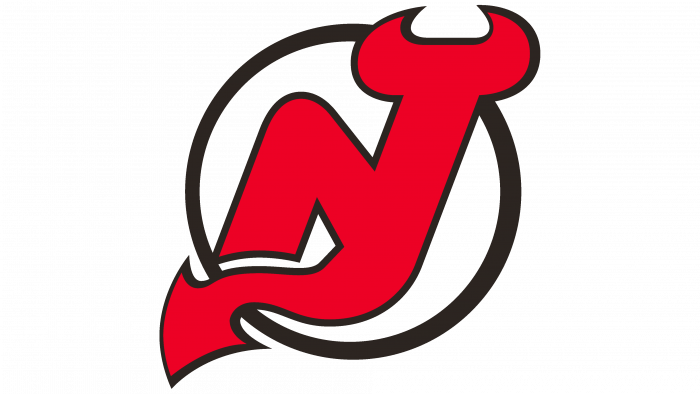
It is a reasonably intriguing inquiry why in 1974, the National Hockey League chose to build up a group in Kansas City. Tragically, no one will at any point answer this inquiry since the NHL’s thought processes are difficult to comprehend. Notwithstanding its name, Kansas City is arranged in Missouri on the Missouri River’s right bank. The city’s western rural areas are Kansas, whose third-biggest city is a similar name – Kansas City (Kansas). In Kansas, hockey was practically unbelievable. In Missouri, all “affection for the puck” was moved toward the east towards St. Louis, the old neighborhood for St. Louis Blues ice hockey group. In any case, in 1974, the NHL was enticed by an exceptional Kemper Arena who worked to play host to the city’s expert b-ball and hockey groups. Subsequently, in 1974 it set an extension group in Kansas City called the Kansas City Scouts.
At first, the new group needed to bear the name of the Kansas City Mohawks. It implied Mohawks, a Native Indian clan that served James Fenimore Cooper as the model for his anecdotal “Mohicans.” But the Mohawk public is the most easterly clan of the Iroquois Confederacy and lives primarily in New York. The name was chosen with a specific purpose. Its initial two letters (MO) are the authority contraction of Missouri’s state, and the stem (Hawks) reminds Jayhawkers. These Kansas sectarians served in the Union armed force during the Civil War. In this manner, the name of the Indian clan was to represent the association between the two states. Sadly, this thought was deserted because of the Chicago Black Hawks ice hockey group (around then, its name was composed independently), which didn’t need either agreement with its name or the usurpation of Indian topics. The meaningful conversation finished with a trade-off: the Kansas City group had to leave the Mohawks, yet it was permitted to pick another “Indian” name. The proprietors then, at that point, held a challenge to name the new group. Scouts decided to respect the Sioux Indian Scout, whose landmark is set in Penn Valley Park. The Indians who served the national government were indispensable insight officials and trackers in the nineteenth-century U.S. Armed force. The famous sculpture of an Indian riding a horse was included in the group’s logo.
The Scouts’ tones were blue, red, and yellow, yet this stayed confidential for most city occupants, as basically nobody visited the group’s host games.
A financial slump in the Midwest had an unexpected adverse consequence on the Kansas City Scouts. After only two seasons, the group was covered in a $1 million obligation. The club couldn’t remain in Kansas City anymore. Since the Kansas City Scouts would not like to rehash the Chingachgook’s local clan’s destiny, it was moved to Denver. In 1976, the NHL was arranging another extension – in Seattle and Denver, yet after evaluating the financial circumstance, the League CEOs didn’t rush to extend. In 1976, the Scouts consumed on the Great Plain and moved to the Colorado mountains.
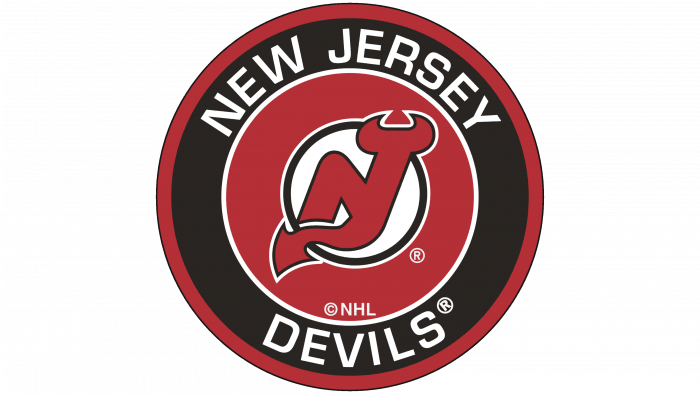
In Denver, the group got another name – Colorado Rockies. The club was named after the Rocky Mountains. The Rockies didn’t need to change the shading plan, as blue, yellow, and red are the Colorado official banner tones. In addition, the Colorado state banner brought into the state of a mountain turned into the Colorado Rockies club’s new logo.
In Denver, the group’s circumstances didn’t improve altogether. Their six seasons here are striking for two things. To start with, the Rockies were the last NHL club, which had two arrangements of jeans. Second, the showy Don Cherry was named to the lead trainer position. Fans preferred the group, and they visited have games (even though Don’s style made the Stanley Cup end of the season games just in the 1977-1978 season). Be that as it may, it didn’t save the Rockies from selling out and moving to New Jersey. Without a doubt, Denver was a typical town in those years, and the club’s monetary circumstance was dreadful. The arrangement was self-evident.
In 1982, the Colorado Rockies was offered to John J. McMullen, who declared the group’s movement to New Jersey. Another game complex had been developed in East Rutherford, the ward not a long way from New York. The club surged thereby and by changing its shirt and name. Presently the group was called Devils.
The group accepted its name not out of appreciation for Satan but after the Jersey Devil’s legend. This obscure animal supposedly possesses the timberlands of the southern piece of the state. The club proprietors held the name-the-group challenge. A few names, including Coastals, Meadowlarks, Blades, Jaguars, and so on, we’re on the last voting form, yet eventually, the decision tumbled to Devils.
The legend of the Jersey Devil is more than 250 years of age. In 1735 Mrs. Leeds, a rancher from southern New Jersey, discovered that she was pregnant for the thirteenth time. She was furious with that as she had effectively had twelve youngsters. In disappointment, Mrs. Leeds reviled her significant other and the unborn youngster, crying that the kid would be the Devil.
The helpless lady’s desire was satisfied: she brought forth an awful monster that promptly ate up the entire family and hopped into the woodland. The legend about the Devil is a piece of old neighborhood stories. Throughout the long term, the southern part of the state was shaken by great reports about appalling posterity hanging out in the area. Terrified pilgrims remained at home in the nights; youngsters didn’t go to class. Many individuals supposedly saw this animal. However, no one figured out how to get him. The Philadelphia Zoo offered a 1,000,000 dollar award for the catch of the beast. A couple of days after the fact, someone brought a strange animal, which ended up being a kangaroo with stuck wings.
Intrigued by this legend, the previous Scouts and Rockies named themselves the New Jersey Devils. The group plays in North Jersey (close to New York), and the Devil lived in Southern (close to Philadelphia) and didn’t trouble hockey players. At any rate, the club addresses the whole state.
The group’s logo letters “N” and “J” (representing the name of the state), delivered with demon horns at the highest point of the “J” and a sharp tail at the base.
The group tones were red and green. Sporting red and green shirts, the Devils began the 1983-1984 season. The group didn’t make a lot of progress.
The New Jersey Devils has an exceptionally inquisitive yet embarrassing and harmful moniker – Mickey Mouse. Even though it isn’t generally expected, fans can call them Mickey Mouse, shocked by their top choices’ loss. The given moniker started in 1983. After a 13–4 misfortune to the Edmonton Oilers, in a post-game meeting, the Oilers’ unbelievable forward Wayne Gretzky scrutinized the Devils and said they were “putting a Mickey Mouse procedure on the ice.”
The New Jersey Devils became one of the best NHL groups under Lou Lamoriello’s administration, who rose to his present post in the last part of the 1980s. The group made the way to the final in the 1988 Stanley Cup end of the season games yet lost the Boston Bruins.
The New Jersey Devils’ mascot is N.J. Demon.
Meaning and History
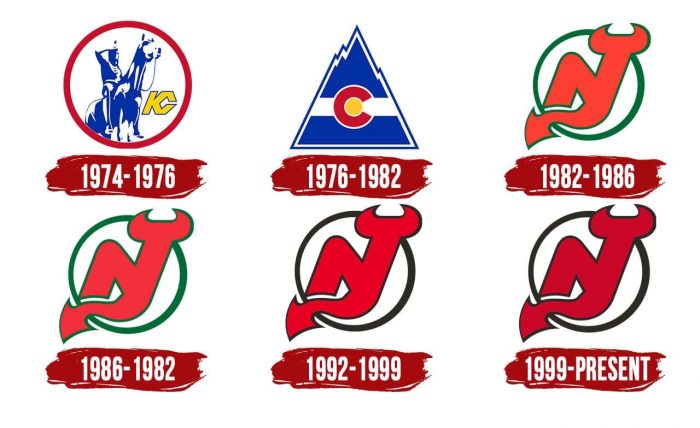
This current club’s donning profession is hugely different: it began with the name of Kansas City Scouts, passed the Colorado Rockies stage, and in the end, turned out to be New Jersey Devils. A rebranding went with each step with an adjustment of the logo plan. The initial two adaptations are identified with the past names; along these lines, they address the scouts from Penn Valley Park and the Rockies. The model of the cutting-edge adaptation showed up a lot later – before moving from Colorado to New Jersey.
1974 – 1976
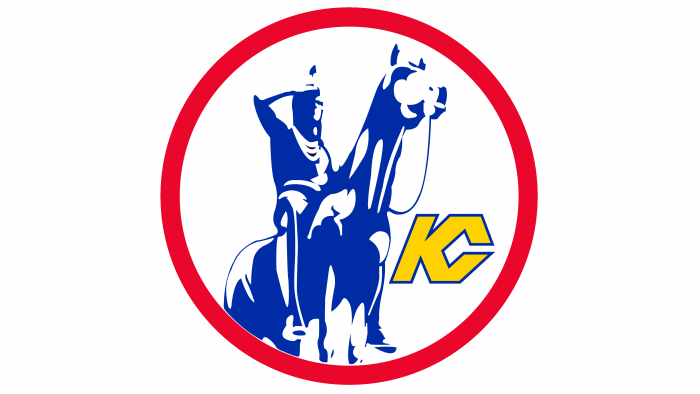
Kansas City turned into the home city for the expert hockey group called Kansas City Scouts. Their first logo addressed a realistic picture of the Scout landmark. It is a Sioux Indian sitting on a pony. The emblem contained yellow with blue trim letters “K.C.” with a red circle around the sculpture.
1976 – 1982
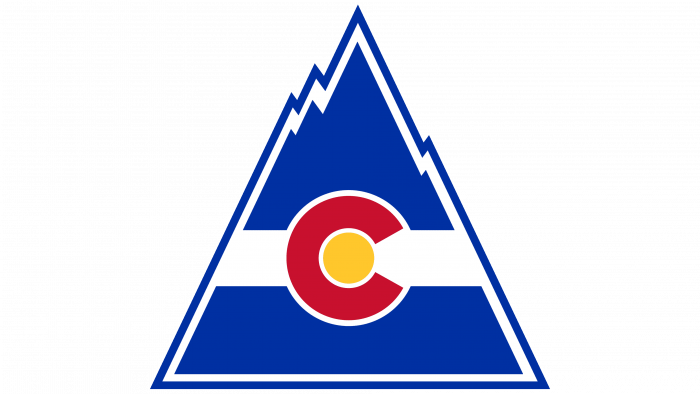
Moving from Kansas to Colorado prompted changes for the sake of the Colorado Rockies and an adjustment of the logo. It addressed the Colorado state banner brought into the state of a mountain. Likewise, there was a red crescent in the center, looking like the letter “C” and a yellow dab, taking after a puck inside the letter.
1982 – 1986
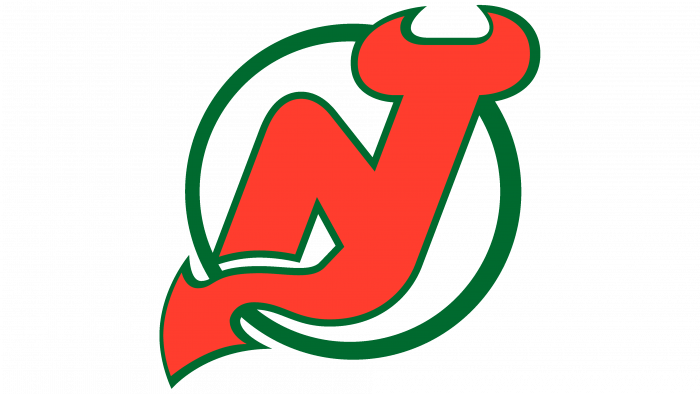
As referenced above, in 1982, the club was purchased by the new proprietor, whose spouse drew another logo. Since the new name of the group was Devils, the logo must be fitting. It joins the letter “N” with Satan’s tail at the base and “J” with fallen angel horns at the top. The monogram was red with a green layout.
1986 – 1992
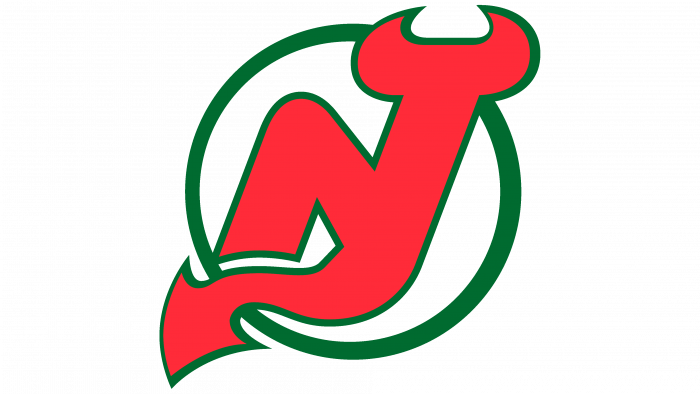
The resulting logo modifications were minor. Each time the designs and shading quality improved, the drawing continued as before from 1983 to 1986.
1992 – 1999
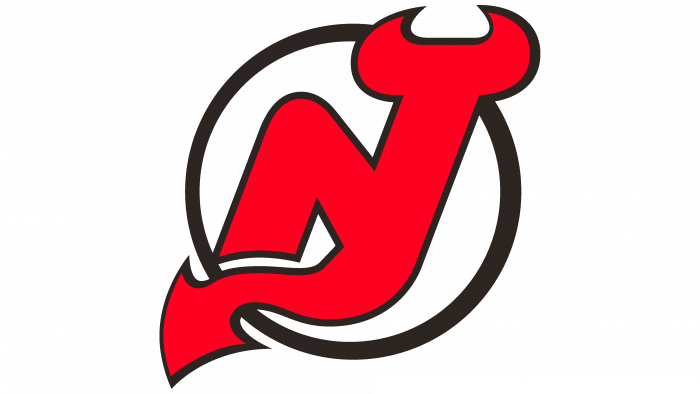
1999 – present
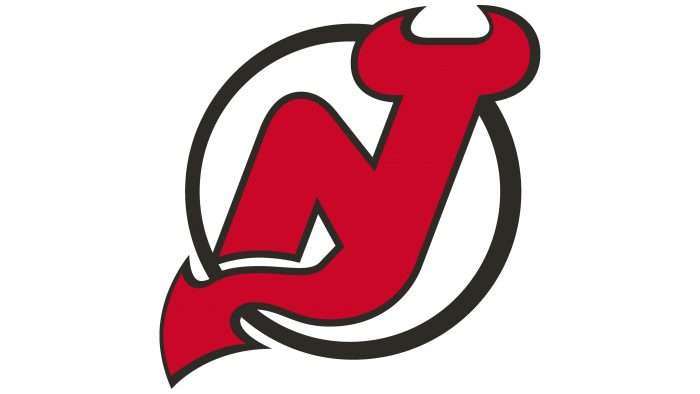
His better half John McMullen proposed the new Emblem’s thought and sketch and afterward settled it by an expert visual communication and promoting studio. The current adaptation includes a monogram containing two images from “New Jersey.” They address the remainder of the club’s name – “Fiends,” as they are formed like a fallen angel with horns and a tail. The horns are shaped by the upper serif of the letter “J,” The sharp bottom is framed by the extended right leg “N.” An expressive red figure is situated against a white foundation inside an open dark ring.
Logos with similar colors:










